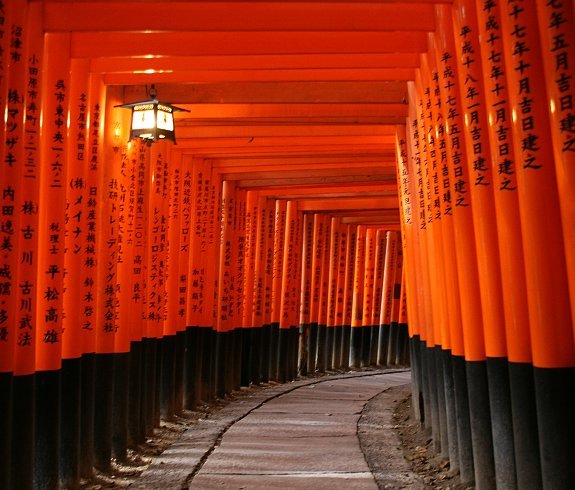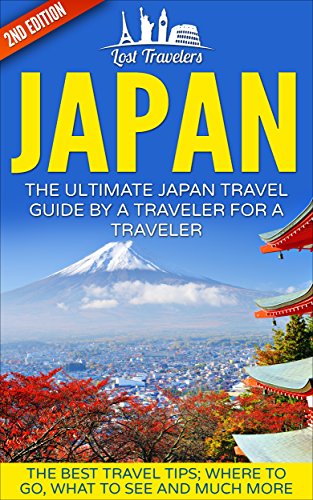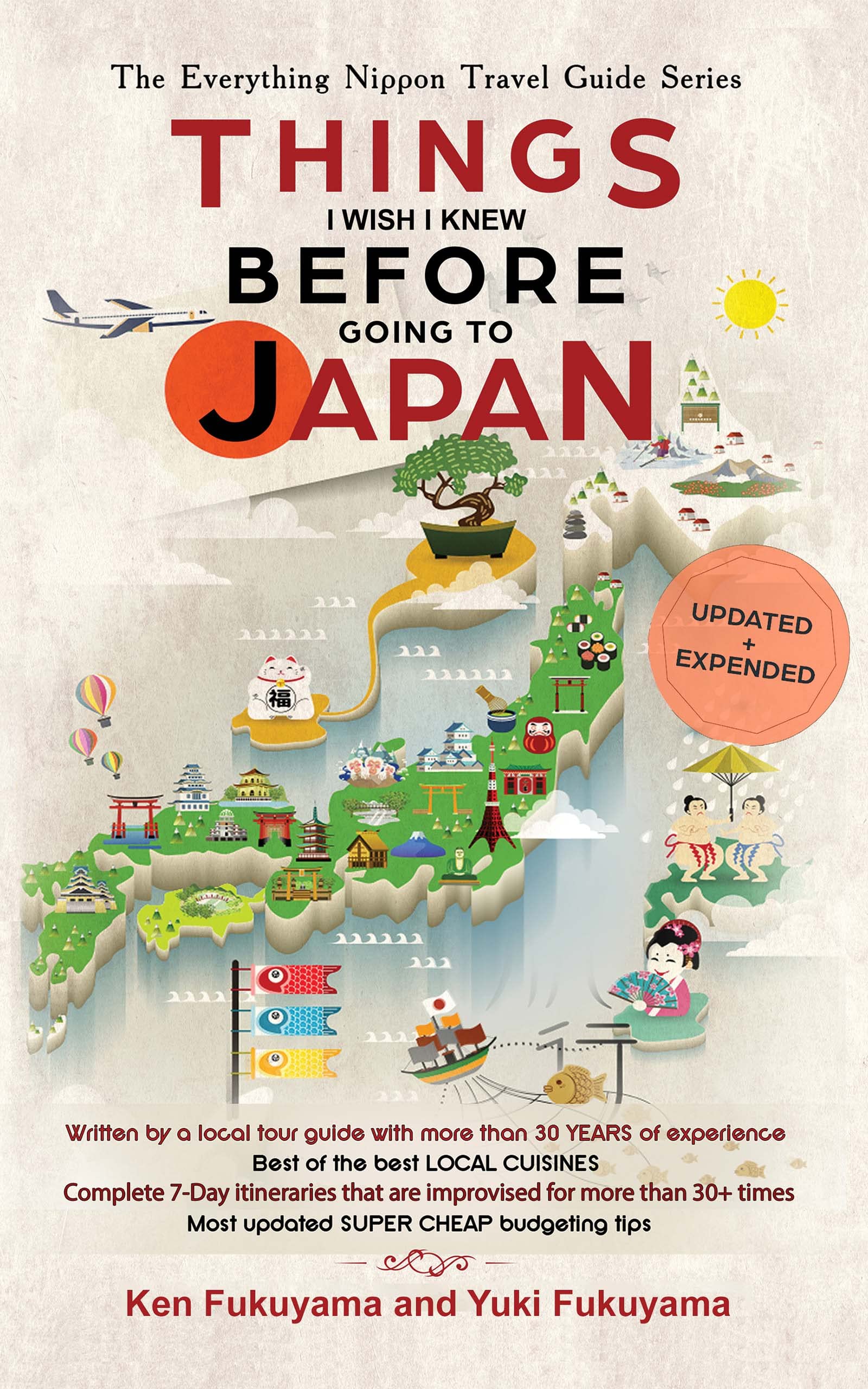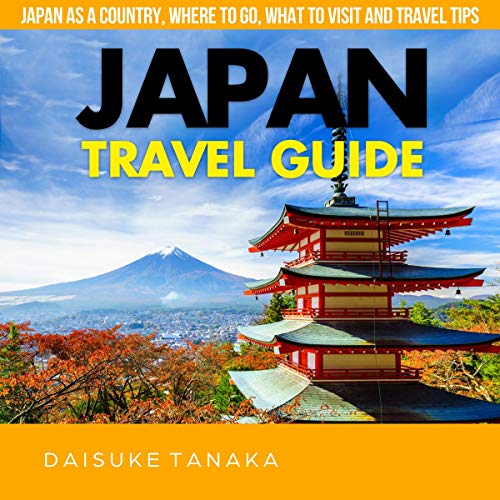Win a Free Trip to Japan!
Experience cherry blossoms and ancient temples
Traveling to Japan can be an incredible experience, offering a rich tapestry of culture, cuisine, and scenic beauty. To make the most of your journey, it’s crucial to understand the unique customs and etiquette that define Japanese society. Additionally, knowing the best times to visit and essential Japanese phrases can significantly enhance your trip. This Japan travel guide will provide you with key insights, including tips on navigating public transportation, discovering must-visit destinations, and savoring popular Japanese cuisine. Prepare to immerse yourself in the vibrant culture and create unforgettable memories.
Understanding Japanese Culture and Etiquette
When diving into the rich tapestry of Japan’s culture, familiarizing yourself with its etiquette is crucial for a respectful and enjoyable travel experience. The Japan Travel Guide underscores key aspects that travelers should embrace:
- Politeness is Paramount: Japanese people value respect and courtesy. Use polite greetings like “Konnichiwa” (Good afternoon) and bow slightly when meeting someone.
- Shoes Off Indoors: Always remove your shoes when entering someone’s home, traditional inns (ryokan), or certain restaurants.
-
Dining Etiquette:
- Avoid sticking chopsticks upright in your rice, as it resembles funeral customs.
- Wait for everyone to be served before starting your meal.
- Show appreciation with a polite “Itadakimasu” (Let’s eat) before your meal and “Gochisousama deshita” (Thank you for the meal) afterwards.
- Quietness in Public Places: Maintain a low volume on public transport and in public spaces. Speaking loudly can come off as rude.
- Public Displays of Affection: While personal space is respected, public displays like hugging and kissing are less common in Japan.
- Gift Giving: Consider bringing a small gift or souvenir from your home country. It symbolizes thoughtfulness and is greatly appreciated.
This overview of Japanese culture and etiquette is essential for your Japan Travel Guide. By adhering to these customs, you’ll not only enhance your travel experience but also forge deeper connections with the locals.

Best Times to Visit Japan
When planning your trip, it’s crucial to know the best times to visit Japan. This ensures you experience the country’s stunning scenery and vibrant culture at its peak. Here’s a breakdown of the seasons:
-
Spring (March to May): Famous for cherry blossoms, spring is a magical time in Japan. The weather is mild, making it ideal for outdoor activities. Here are some highlights:
- Best for: Cherry blossom festivals, hanami picnics
- Popular destinations: Tokyo, Kyoto, Osaka
-
Summer (June to August): Japan can be hot and humid, with temperatures soaring. However, summer hosts many exciting festivals.
- Best for: Matsuri (festivals) and hiking
- Popular destinations: Mount Fuji, Okinawa
-
Autumn (September to November): This is another fantastic time to visit. The fall foliage transforms Japan into a colorful landscape.
- Best for: Scenic views and photography
- Popular destinations: Nikko, Hiroshima
-
Winter (December to February): While cold, winter offers unique experiences, such as skiing in the Japanese Alps.
- Best for: Skiing and winter festivals
- Popular destinations: Hokkaido, Nagano
Each season provides a unique perspective on Japan, making it an exciting place to explore year-round. In your Japan Travel Guide, consider your preferences to choose the best time for your visit!
Essential Japanese Phrases for Travelers
When traveling to Japan, mastering a few essential Japanese phrases can greatly enhance your experience. Locals appreciate any effort made to speak their language, making your interactions smoother and more enjoyable. Here are some vital phrases to include in your Japan Travel Guide:
- Hello: こんにちは (Konnichiwa)
- Thank you: ありがとう (Arigatou)
- Excuse me / I’m sorry: すみません (Sumimasen)
- Yes / No: はい (Hai) / いいえ (Iie)
- How much is this?: これはいくらですか? (Kore wa ikura desu ka?)
- Where is…?: …はどこですか? (…wa doko desu ka?)
- Restroom: お手洗い (Otearai)
Pronunciation Tips
Understanding pronunciation is crucial for effective communication. Consider the following:
| Phrase | Romaji | Pronunciation Tips |
|---|---|---|
| こんにちは | Konnichiwa | Sounds like "kon-ni-chi-wa." |
| ありがとう | Arigatou | Pronounced as "ah-ree-gah-tow." |
| すみません | Sumimasen | Say it as "soo-mee-mah-sen." |
Using these phrases will not only ease your communication but also show respect for the culture. Be sure to practice them before your trip, and refer back to your Japan Travel Guide for other helpful phrases during your travels.
Navigating Public Transportation in Japan
Navigating public transportation in Japan can be seamless and efficient, offering travelers an extensive and well-connected system. Here are essential details to include in your Japan Travel Guide for an easier journey:
-
Train Systems
- Shinkansen (Bullet Train): Known for its speed, punctuality, and comfort, the Shinkansen connects major cities, making long-distance travel enjoyable.
- Local Trains and Subways: Urban areas feature multiple lines that efficiently transport passengers across cities like Tokyo and Osaka.
-
Transportation Cards
- Suica and Pasmo: These rechargeable cards facilitate smooth travel on trains, subways, and buses. Bonus: they are also usable at many convenience stores!
-
Buses
- Japan’s bus network complements trains, especially in areas where the train does not reach. Keep in mind that rural routes may have limited schedules.
-
Navigational Apps
- Utilize apps such as Google Maps or HyperDia, which provide real-time routes and schedules, ensuring you never lose your way.
By mastering these transportation methods, you can explore Japan efficiently. This knowledge will enhance your experience, allowing you to focus on enjoying all the rich culture and sights rather than stressing over logistics. Include this essential information in your Japan Travel Guide for a smoother adventure!

Must-Visit Destinations in Japan
When planning your trip, this Japan Travel Guide highlights several must-visit destinations that showcase the diverse beauty and rich culture of Japan. Here are some top picks:
-
Tokyo: A bustling metropolis, Tokyo combines traditional ambiance with modern innovation.
-
Must-See Spots:
- Shibuya Crossing: Iconic for its sea of pedestrians.
- Senso-ji Temple: Tokyo’s oldest temple, located in Asakusa.
-
Must-See Spots:
-
Kyoto: Renowned for its classical Buddhist temples, gardens, and imperial palaces.
-
Must-See Spots:
- Kinkaku-ji (Golden Pavilion): A stunning Zen temple covered in gold leaf.
- Fushimi Inari Taisha: Famous for its thousands of vermilion torii gates.
-
Must-See Spots:
-
Osaka: Known for its vibrant nightlife and delicious street food.
-
Must-See Spots:
- Dotonbori: Lively area known for neon lights and food stalls.
- Osaka Castle: A historic marvel with beautiful surrounding parks.
-
Must-See Spots:
-
Hiroshima: A city with a poignant history, focusing on peace and reflection.
-
Must-See Spots:
- Hiroshima Peace Memorial Park: Commemorates the victims of the atomic bomb.
- Miyajima Island: Famous for the floating torii gate.
-
Must-See Spots:
These destinations offer a mix of experiences, making them a crucial part of your Japan Travel Guide. Whether you prefer serene landscapes or energetic city life, Japan has something for every traveler. Plan your itinerary wisely!
Popular Japanese Cuisine to Try
When traveling to Japan, indulging in the local cuisine is a must. This Japan Travel Guide highlights some iconic dishes that will tantalize your taste buds. Here’s a selection of popular Japanese cuisine you should definitely try:
- Sushi: Fresh fish served over vinegared rice. Variations include nigiri, maki, and sashimi.
- Ramen: A noodle soup that offers multiple styles, from Shio (salt) to Tonkotsu (pork bone broth).
- Tempura: Lightly battered and deep-fried seafood or vegetables, often accompanied by a dipping sauce.
- Okonomiyaki: A savory pancake filled with a variety of ingredients, cooked to perfection on a griddle.
- Takoyaki: A popular street food made of batter filled with diced octopus and cooked in a specialized mold.
| Dish | Main Ingredients | Flavor Profile |
|---|---|---|
| Sushi | Rice, fish, seaweed | Fresh, umami |
| Ramen | Noodles, broth, toppings | Savory, complex |
| Tempura | Seafood/vegetables, batter | Crispy, light |
| Okonomiyaki | Cabbage, meat, sauce | Savory, hearty |
| Takoyaki | Batter, octopus, sauce | Tender, flavorful |
Tasting these dishes will provide you with a deeper connection to Japanese culture. Therefore, make sure to include them in your itinerary. This Japan Travel Guide will also help you navigate local dining customs to enhance your culinary experience. Enjoy the flavors of Japan!
Accommodation Options in Japan
When venturing to Japan, selecting the right accommodation is essential for an enjoyable trip. The diversity in lodging caters to various budgets and preferences. Here’s a concise overview of your choices, featuring traditional and modern options.
Types of Accommodation
-
Hotels
- Western-style hotels: Often found in major cities, offering familiar comforts.
- Business hotels: Budget-friendly, cater to solo travelers. Basic but functional.
-
Ryokan
- Traditional Japanese inns that provide a unique cultural experience.
- Guests sleep on tatami mats and can enjoy kaiseki meals.
-
Capsule Hotels
- Ideal for short stays and solo travelers.
- Compact pods provide a minimalist yet comfortable experience.
-
Hostels
- Great for backpackers and those seeking a social atmosphere.
- Often include kitchens and common areas for interaction.
-
Vacation Rentals
- Options like Airbnb allow for local living experiences.
- Ideal for families or larger groups seeking more space.
Comparison Table of Accommodation Types
| Type | Average Cost per Night | Recommended For | Unique Feature |
|---|---|---|---|
| Hotels | $100 – $300 | Business travelers | Room service and amenities |
| Ryokan | $150 – $400 | Cultural experiences | Tatami floors and kaiseki |
| Capsule | $30 – $60 | Solo travelers | Space-efficient pods |
| Hostels | $20 – $50 | Backpackers | Social environment |
| Rentals | Varies ($50 – $400) | Families or groups | Home-like experience |
In your Japan Travel Guide, consider these accommodation options to enhance your visit. Each choice reflects the unique culture and hospitality of Japan, ensuring a memorable experience.

Safety Tips for Travelers in Japan
Traveling to Japan can be an incredible experience, but it’s essential to keep safety in mind. This Japan Travel Guide provides valuable insights to ensure your trip remains enjoyable and secure.
Here are some crucial safety tips for travelers:
- Stay Aware of Your Surroundings: Japan is generally safe; however, stay alert, especially in crowded places.
-
Emergency Numbers: Familiarize yourself with emergency contacts:
- Police: 110
- Ambulance and Fire: 119
- Emergency Kits: Carry a small first aid kit and any necessary medications.
- Natural Disasters: Be informed about earthquake procedures, as Japan is prone to tremors. Look for evacuation signs and follow instructions if an alarm sounds.
- Respect Local Customs: Understanding cultural etiquette can prevent misunderstandings that may lead to conflicts.
- Keep Valuables Secure: Use a hotel safe or keep valuables in a secure bag to avoid theft.
In terms of overall safety, Japan consistently ranks as one of the safest countries globally. While walking at night is typically safe, exercise common sense.
Conclusion: With these safety tips in mind, you can enjoy all that Japan has to offer. This Japan Travel Guide will help you navigate your adventure with confidence, ensuring a memorable experience while prioritizing your well-being.
Money and Currency Tips for Traveling in Japan
When traveling in Japan, understanding the local currency and payment methods is crucial for a smooth experience. Here’s a comprehensive overview to enhance your Japan Travel Guide.
Currency Overview
- Currency: Japanese Yen (JPY)
- Coins: 1, 5, 10, 50, 100, and 500 Yen
- Banknotes: 1,000, 2,000, 5,000, and 10,000 Yen
Money Tips
- Cash is King: While credit cards are accepted in many large establishments, small shops and restaurants may only accept cash. Always carry enough yen for daily expenses.
- ATM Usage: Look for international ATMs in convenience stores like 7-Eleven, FamilyMart, and Lawson. They allow foreign cards, enabling easy access to cash.
- Currency Exchange: Exchange currency at airports, banks, or authorized exchange offices. Avoid exchanging at hotels to get better rates.
-
Budgeting:
- Daily Expenses: Aim for a budget of 3,000-10,000 Yen for food and activities, depending on your preferences.
- Tipping: Tipping is not customary in Japan and may even be considered rude.
- Prepaid Cards: Consider getting a prepaid travel card for easy payments on public transport and small purchases, thus enhancing your Japan Travel Guide experience.
By keeping these money and currency tips in mind, you’ll navigate your finances more effectively during your Japan adventure!
Planning Your Itinerary: A Travel Guide to Japan
Creating the perfect itinerary for your Japanese adventure requires careful planning. A well-structured travel schedule can enhance your experience and help you cover key attractions.
Key Points to Consider:
-
Duration of Stay:
- Short Trip (5-7 days): Focus on major cities like Tokyo, Kyoto, and Osaka.
- Longer Trip (10+ days): Explore off-the-beaten-path destinations such as Hokkaido or Okinawa.
-
Interests:
- Cultural Exploration: Include temples, museums, and local traditions.
- Nature Enthusiasts: Plan visits to national parks and scenic spots like Mount Fuji.
- Transportation: Utilize the Japan Rail Pass for unlimited travel on JR trains, making it a cost-effective option for long-distance travel.
Sample Itinerary:
| Day | Destination | Activities |
|---|---|---|
| Day 1 | Tokyo | Visit Senso-ji Temple and Shibuya Crossing |
| Day 2 | Kyoto | Explore Kinkaku-ji (Golden Pavilion) |
| Day 3 | Nara | Feed the deer at Nara Park |
| Day 4 | Hiroshima | Tour the Peace Memorial Park |
| Day 5 | Osaka | Experience street food in Dotonbori |
When planning, refer to a Japan Travel Guide to discover popular festivals, seasonal activities, and local tips. By personalizing your itinerary based on these essentials, you ensure a memorable experience in Japan!
Frequently Asked Questions
What is the best time to visit Japan?
The best time to visit Japan typically falls during the spring (March to May) and autumn (September to November) seasons. In spring, visitors can witness the breathtaking cherry blossoms, especially in cities like Tokyo and Kyoto. Autumn offers picturesque foliage, with vibrant fall colors that transform the landscape. Both seasons provide mild weather and numerous cultural festivals, making them ideal for exploration.
Do I need a visa to travel to Japan?
Whether you need a visa to travel to Japan depends on your nationality and the length of your stay. Citizens of several countries, including the United States, Canada, and many EU nations, can enter Japan without a visa for short visits, typically up to 90 days. However, it is essential to check with the Japanese embassy or consulate in your region for the most accurate and up-to-date visa requirements before planning your trip.
What are some dietary restrictions or customs to be aware of while eating in Japan?
When dining in Japan, it’s important to be aware of certain dietary customs. Tipping is generally not practiced, as good service is considered standard. Additionally, some items, like sushi or sashimi, may include raw fish, so it’s advisable to inform the staff if you have any allergies or dietary restrictions. Vegetarian and vegan options may be available, but it’s wise to specify your needs, as some dishes might contain fish-based ingredients like dashi.
How can I navigate public transportation in Japan?
Navigating public transportation in Japan is efficient and user-friendly, with an extensive network of trains and buses. The Japan Rail Pass is a popular option for travelers planning to explore various cities. It’s advisable to download apps like Hyperdia or Google Maps for real-time transit schedules and direction assistance. Most train stations have English signage, making it easier for non-Japanese speakers to understand routes and transfers. Moreover, punctuality in Japan is taken seriously, so always arrive a few minutes early.
What cultural etiquette should I follow when visiting temples and shrines?
When visiting temples and shrines in Japan, it’s essential to observe specific cultural etiquettes. Bowing when entering or exiting a place is a sign of respect. Always remove your shoes before entering temple buildings or certain areas. When participating in rituals, such as washing hands at purification fountains, follow the local customs carefully. Additionally, speak softly and maintain a respectful demeanor, as these sites are often sacred spaces for worship.
